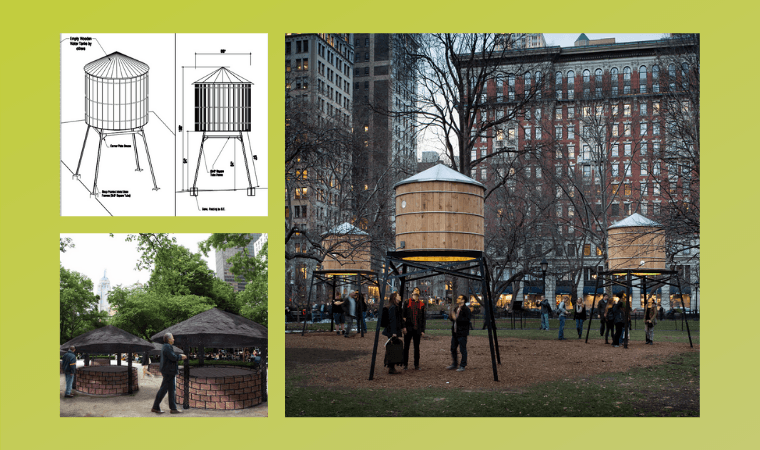This site uses cookies – Learn more.
Proposal to Park: Iván Navarro
Proposal to Park: Iván Navarro
Proposal to Park is a new series focused on documenting the progression of project artists’ proposals into exhibitions for Madison Square Park’s public art program.
Iván Navarro’s This Land is Your Land was on view in 2014.
In his proposal, Iván Navarro considered water as the most basic necessity and used water-bearing vessels to explore themes of migration, language, and social structure. There was an evolution in the proposal process in which Navarro transitioned from wells to water towers, perhaps to better reflect New York’s built environment. Strategically placed mirrors in the interior of the water towers created the illusion that the lights extended into vertical perpetuity.
Please see below to learn more about Navarro’s process in his own words.
Madison Square Park Conservancy: How did your proposal evolve to meet the demands of exhibiting in a public park?
Iván Navarro: The third proposal for This Land is Your Land was dialoguing better with the park and its surroundings than the previous proposals. For me, a convincing proposal is when all technical aspects bring the poetic content naturally to the viewer. The piece has to be a whole in order to make all components interact and flow perfectly.
To me, the biggest challenge in the park was to understand how to use artificial light during the day and night at the same time. The first and second proposals weren’t working well during the day—the neon lights didn’t have a strong enough presence in the work. So one day I went back to the park to get inspired again by its urban landscape. I saw many water towers at the top of the buildings on Fifth Avenue and 26th Street, and I realized they should work perfectly as light boxes standing on their steel legs. I imagined people looking up, seeing the interior of a water tower for the first time.
MSPC: What surprised you most about exhibiting work in Madison Square Park?
IN: I loved to observe people when they have no idea that what they are seeing is public art.
To experience a situation that is not common, the unusual connections of shapes and ideas in one work outdoors—it makes people feel and think more about unexpected things, which is for me the most important function of art in our society.










